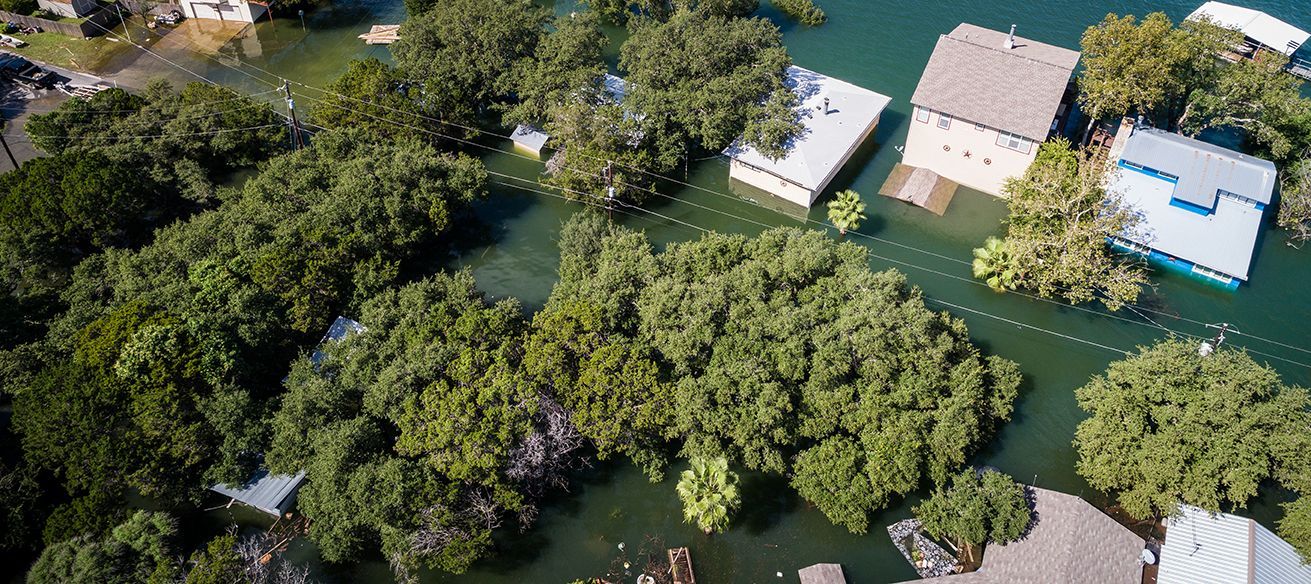Remote Building Inspections Guidance for Local Governments
Share this article:
The Institute for Building Technology and Safety (IBTS) is a national, nonprofit professional services organization providing on-call, third-party building department support for local governments. In this white paper, IBTS shares its experiences with remote building inspections to help jurisdictions evaluate the utility of this emerging approach for their own building departments. IBTS is also seeking to establish a steering committee to help define best practices for local governments. For more information, visit ibts.org/remote
Building inspections are a critical part of a local government’s services, as they ensure the safety of structures for occupants and keep development moving forward. Yet for many jurisdictions, meeting inspection demand without creating undue backlogs and delays is easier said than done. This is especially true for rural jurisdictions that may have only one or two inspectors responsible for covering large areas. The travel time alone creates an additional burden on inspectors as well as frustratingly long wait times for contractors and property owners. Remote building inspections may offer an attractive alternative for many such communities.
What is a Remote Building Inspection?
A remote building inspection (also called remote video inspection) uses video conferencing technology to allow an inspector to conduct the inspection offsite, providing direction to and receiving live video from an onsite counterpart who is using a phone or tablet. The counterpart can be the contractor, jurisdiction staff, or another technician onsite. Unlike a traditional onsite inspection, the inspector does not need to travel to the jobsite location.
Remote Building Inspection Benefits
Efficiency and Cost Savings. The primary benefit of remote inspections is that they improve scheduling and reduce delays. By eliminating travel time, inspectors can conduct more inspections in a shorter amount of time. In doing so, they also improve productivity by increasing the number of buildings that can be inspected in a day without a corresponding increase in labor or other costs.
“The improved efficiency is a huge benefit for everyone involved,” said Charlie DeCassios II, an IBTS inspector who has conducted remote and onsite inspections for jurisdictions in Oklahoma. DeCassios notes that efficiency and cost savings also benefit contractors and property owners. “For a reinspection, it may only take me a few minutes to verify a correction onsite, but if you have to account for an hour or more of travel time, the contractor or site owner may be waiting a while before I can make it back out there,” he explains. This can hinder the construction timeline, disrupting subcontractor schedules and costing the contractor and property owner time and money. “But if we can do the reinspection remotely, it’s much faster, sometimes the same day,” adds DeCassios.
In some cases, the contractor or owner can take a geo-verified video of the corrected work and send it to the inspector for review later. “This can really help a homeowner who is maybe out of their house during business hours,” says DeCassios. “If they can just take video and send it in, it saves them from taking time off work.”
Solving Common Staffing Issues. With improved efficiency, remote inspections can be particularly useful for helping jurisdictions manage staffing gaps and construction surges. They can also help the jurisdiction accommodate inspectors recovering from injuries or with other accessibility issues. With building inspectors recognized as aging workforce, remote inspections may provide an opportunity for older inspectors to continue using their expertise with less time on the jobsite.
Documentation. The video files from a remote inspection can serve as useful documentation during conflict resolution or to provide future contractors, owners, or buyers with more information. “A traditional onsite inspector’s report is usually very brief and may not contain critical details that you want when evaluating a failure,” says Chris Miller, AICP, IBTS’ Director of Municipal Services, who explains that having a video record can protect the jurisdiction from liability. “You may also have a homeowner or contractor who would like more detail on a space before they start remodeling. Remote inspection video files can provide useful information before they open a wall.”
Additional Angles. An onsite technician can use their phone or tablet to get additional angles above their head or below an object that may be otherwise challenging to see, in some cases offering the inspector an opportunity to get a more thorough look at the structure. While our inspectors have noted this is a useful benefit to remote inspections, it should be noted that an onsite inspector can also use their handheld device for this purpose.
Training. The jurisdiction can use remote inspections as a training tool, where an offsite certified inspector instructs onsite inspectors-in-training in each aspect of the inspection. This was the case for IBTS inspector Jesse L. Harris, CRI, who trained onsite in Nebraska with Steve Quaid, CBO, CFM, an offsite senior IBTS inspector and plan reviewer located in Louisiana. Harris joined IBTS with construction experience gained as a state-certified journeyman electrician. “Having Steve on the other end of the line with me was like having him right next to me,” says Harris. “He could see things that I thought were perfect and he’d tell me to pull out my tape measure.”
Considerations
While remote inspections offer a number of benefits, jurisdictions should also consider the potential limitations of implementing a remote inspections program.
Connectivity. Remote inspections require a cellular or Wi-Fi signal as the offsite inspector and onsite counterpart work together using live video conferencing. For some projects, especially those in rural communities, reception may be limited. For others, the type of construction may limit connectivity. “It’s pretty rare not to get a connection, even in rural communities,” says Harris. “But I had one project for a school, and due to the amount of concrete in the structure, it weakened my cellular signal so much that I had to attach a mobile hotspot on the exterior of the building.” Harris explains that as he worked his way through the building, he would move the hotspot as needed to maintain enough signal to complete the inspection. “While remote inspections should use live video, if bandwidth fails, I can talk on the phone with the inspector and get direction about which pictures to take.”
Resistance to change. Our inspectors also noted pushback to new technology and processes can be a very real barrier to remote inspections. Some contractors may not have or feel comfortable with the software or device needed to do a remote inspection. Others may balk at changing how their inspections are performed. “Contractors know their inspectors and have built a rapport with them,” explains DeCassios. “They know what the inspector is going to look for and what they need to do to pass an inspection. They may be concerned remote inspections are too impersonal or that they will be more likely to fail.” Yet most contractors will quickly recognize that remote inspections reduce delays, which can significantly benefit their schedules. Plus, they are unlikely to see a difference in their results – and they may find more opportunities for communication. “When the contractor is operating the camera, they are in communication with the inspector the whole time,” says DeCassios. “During a remote inspection, both the contractor and the inspector have a chance to ask questions to help their understanding of the situation.”
Inspectors may also be reluctant to conduct remote inspections. While they may fully recognize the value of remote inspections, inspectors might feel somewhat limited viewing through a camera compared with seeing something with their own eyes. “For inspectors with years or even decades of experience conducting onsite inspections, it understandably takes some time becoming familiar with the remote process,” says Miller.
Best Practices
If your jurisdiction is interested in getting started with or expanding its remote inspections, allowing sufficient time and effort to plan will help reduce hassles and make the process smoother for everyone involved. Our inspectors recommend considering the following best practices before getting started.
Technology and Equipment. Jurisdictions must ensure their inspectors will have sufficient system and internet resources to easily receive and view live video. This includes remote conferencing software, such as Teams or Zoom, for viewing video and interfacing with their onsite counterpart. “We recommend the inspector use a dual-monitor setup, with one monitor for viewing video and one for inputting findings,” explains DeCassios. A smartphone with adequate processing speed is also an important consideration.
Likewise, the onsite counterpart operating the camera will need the same video conferencing software installed on their device, and sufficient Wi-Fi or cellular signal and video capabilities. Noting his experience with the school, Harris reiterates the importance of having a mobile hotspot. “Also, the person onsite needs many of the same things an inspector would, including a tape measure, ladder, GFCI plug tester, screwdriver, flashlight, etc.,” he adds. Jurisdictions can assist the onsite technician by providing a list of the specific software, hardware, and equipment needs well in advance of the inspection, and encouraging them to test the software functionality and their connectivity beforehand.
Communications. Communicating is an important factor in the success of a remote inspections program. Effective communication includes discussions with internal building department staff and ample outreach to contractors and other stakeholders well before the first remote inspection takes place.
“It is important that building department staff understand the reasons for conducting remote inspections and how they will be affected,” says Miller. “Most inspectors will recognize the benefits on reducing backlogs, but they will likely ask about the quality of a remote inspections, what their training and onboarding will entail, or even about liability concerns.” It is useful to establish a dialog with building department staff to ensure that their feedback is taken into consideration when establishing new processes.
Likewise, communicating with contractors in advance can help avoid resistance and make the transition process much easier on everyone. When starting remote inspections in Nebraska, our inspection team held an open house with contractors and crews well before rollout. “This gave us the chance to explain the process in detail and answer a lot of questions and concerns in advance,” explains DeCassios. “It saved a lot of time and made everyone feel much more at ease with the process.”
Because the offsite inspector is directing their onsite counterpart operating the camera, good communication skills during the inspection are also a must. “Looking through the camera lens, the remote inspector doesn’t have the benefit of peripheral vision,” explains Quaid. “It’s important that inspectors must always provide clear communication to the camera operator to make sure they see everything they need to complete a thorough inspection.”
Training and Learning Curves. It is important to allow for some additional time during the initial few months as both inspectors and contractors get used to new processes. Technical difficulties are more than likely to occur during a contractor’s first attempts to conduct the inspection, but after a few times they will feel more comfortable with the technology and the process overall. We recommend allowing an additional 15 to 20 minutes for each initial remote inspection to give everyone time to work out any technical or other challenges.
Relative to the actual software, we recommend local jurisdictions coordinate the implementation of a remote inspection program with their IT department. Most IT departments have staff with experience rolling out new technologies and may even have “train the trainer” programs to create additional subject matter experts within the building department.
Continue the Conversation. Our experience with remote inspections indicates that they may represent a rare opportunity to benefit jurisdictions, inspectors, contractors, and property owners, at no additional cost and with only limited drawbacks. However, we recognize that remote inspections are an emerging alternative to established onsite processes. A number of situations exist where remote inspections have not been fully studied or vetted, and supporting guidance is still largely anecdotal.
To better understand the value of remote inspections and identify opportunities for investigation and improvement, IBTS is establishing a Remote Inspections Steering Committee.
We invite those with experience with and interest in remote inspections to join the Committee to help us explore these topics in more detail over the next few months. Please contact Chris Miller at cmiller@ibts.org to learn more or to join.





